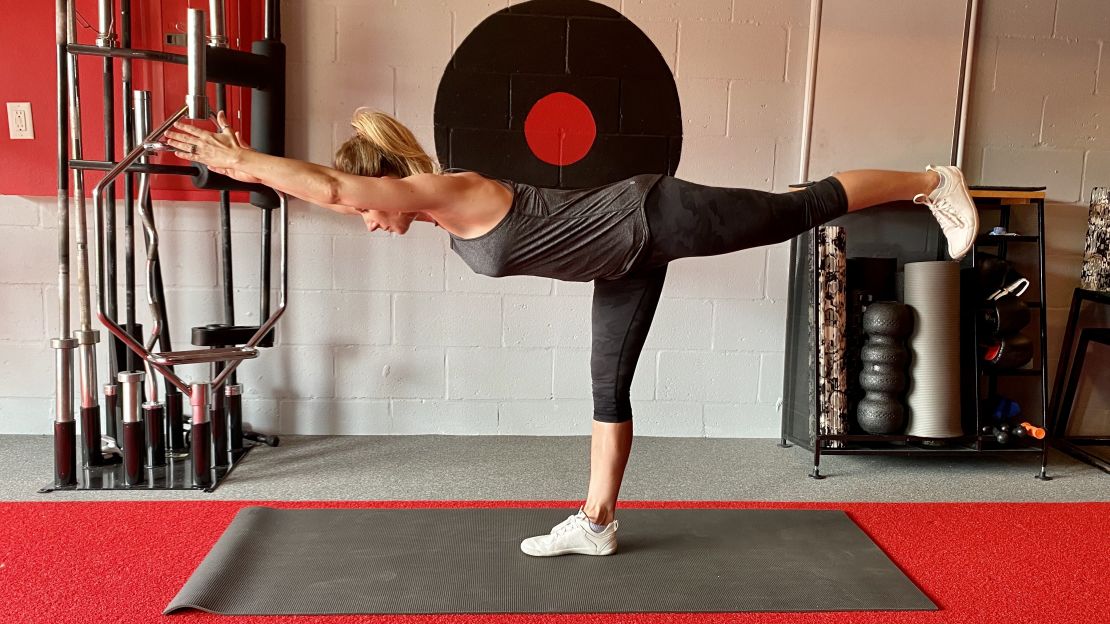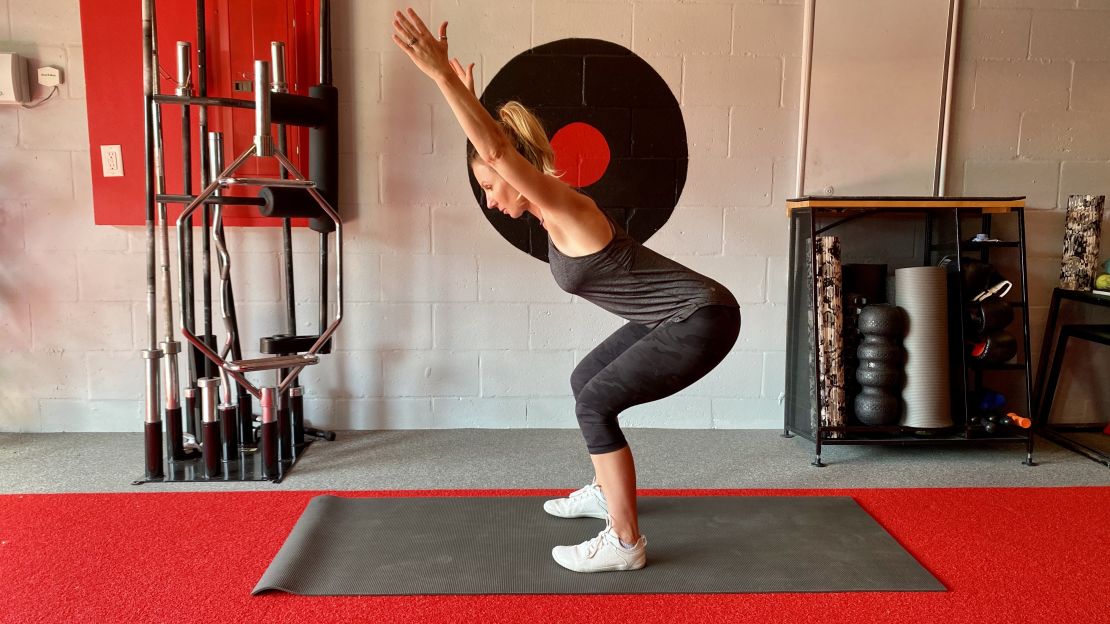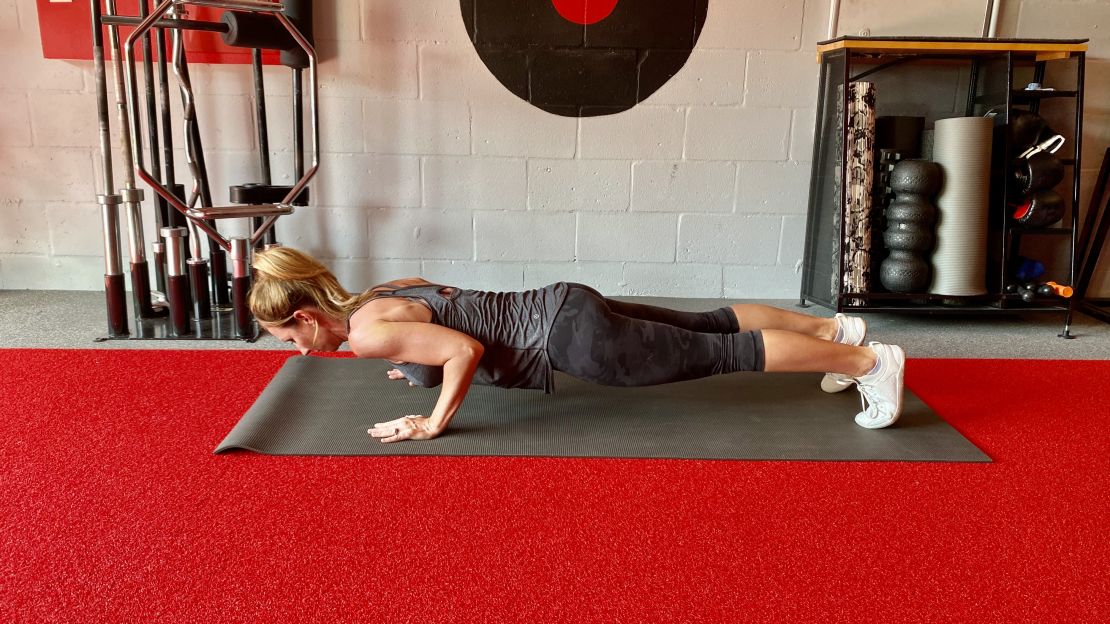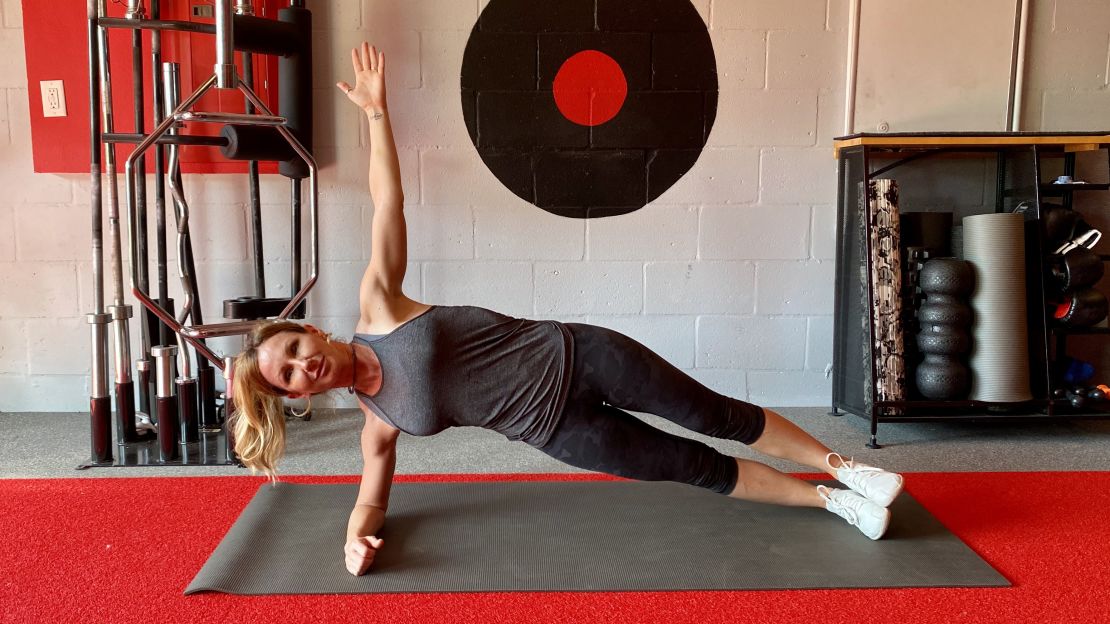Editor’s Note: Join Dana Santas for a seven-part series to learn how to reboot your workout routine — and stick with it. Here’s Part II.
In Part I of this seven-part fitness series, we started our journey by learning how to strengthen our mind-body connection and practice breathing to create good posture. We also eased into an exercise habit with a daily walk.
Now we’ll get you moving in the right directions — literally. This set of exercises focuses on functional body-weight movements in all planes of motion.
Just think about the ways you use your body to move effectively in daily life.
You push your arms forward to reach for things. You pull doors open, squat down to tie your shoes and bend from your waist to pet a dog. You rotate to grab and latch your seat belt and stabilize through your core to sit and stand upright.
And we do all of this while moving around, forward, backward and side to side.
In strength and conditioning, most coaches and trainers identify functional movement exercises in six categories: squatting, hinging, pushing, pulling, rotating and core stabilization. See how they match up with daily-life function?
And, just like the multidirectional movement of everyday life, we also want to perform exercises in all three planes of motion: sagittal (forward/backward), frontal (side to side) and transverse (rotating).
Mastering the exercises below — taking your body through all functional movements and planes of motion — will increase strength, mobility and durability, laying the groundwork for you to safely and effectively progress to weight training, which we’ll embrace in the next installment in this series.
Important note: Before beginning any new exercise program, consult your doctor. Stop immediately if you experience pain.
Proper form is key
Run through the following exercises three to five times per week in the order below for two to four rounds of eight to 10 repetitions each.
And keep this in mind: Practice does not make perfect; practice makes permanent. If you repeat poor form over and over, that’s the movement pattern you’ll memorize.
So don’t rush mindlessly through any of these exercises! Remember the importance of the mind-body connection we discussed in Part I.
Body-weight squat
This squatting exercise in the sagittal plane increases total-body strength with a particular emphasis on the legs and core.

Start standing with your feet a little wider than hip distance and arms at your sides. Inhale, brace your abdominals, and begin lowering into a squat position. Raise your arms out in front at shoulder distance for counterbalance.
Push your knees out slightly as you squat as low as possible without pain or your back rounding. Keep your chest up and back neutral. Exhale as you push through your heels to come back into your starting position.
Single-leg balancing hip hinge
As a single-leg movement in the sagittal plane, this exercise promotes balance, proper hip function and strength in the back of your legs, glutes and back.

From standing, lift one foot slightly, shifting your weight over the other foot. Start slow, establishing balance before adding movement. Move into the exercise by extending one leg behind you as you hinge forward with a flat back, reaching both arms out in front as shown.
Pause here for a second, trying to lengthen your body out in a long horizontal line, perpendicular to your standing leg. Then, with control, return to standing.
Repeat for the desired number of reps then move to the other side.
READ MORE: 5 household items you can use to work out your whole body
Y raise
This pulling move in the sagittal plane increases mobility and strength throughout your upper back and shoulder complex.

From standing, hinge your hips back and bend your knees slightly in a semi-squat position. This is often referred to as “athletic stance.” Place the backs of your hands against the insides of your knees.
Inhale as you raise your straight arms out and up in front of you in a “Y” position. Exhale to return your hands to the insides of your knees.
Maintain athletic position with a flat back and weight in your heels as you move your arms through each repetition.
Push-up
Push-ups, as their name implies, are a pushing movement. They’re done in the sagittal plane and strengthen arms, shoulders, back and core.

From a plank position with your wrists under the shoulders, lower your entire body down by bending your arms until your elbows, shoulders and hips are level. Keep the elbows in toward your sides. Avoid arching your back.
Maintain lumbo-pelvic control by keeping your core engaged. Exhale as you push up, moving your entire body in one motion.
Push-ups can be difficult. If you find yourself struggling, modify by either lowering to your knees or elevating your upper body by placing your hands on a step or bench.
READ MORE: Step up your balance with this stair workout
Kneeling T-spine rotation
This rotational exercise takes place in the transverse plane and focuses on strength and mobility through the side body and back.

Start on your hands and knees. Sit back on your heels, sliding your hands back to so they are directly in front of your knees. Replace your left hand position with your right hand.
Then inhale as you lift your left arm to rotate upward to the left. Keep your hips shifted back with your low back stable. Do the prescribed number of reps, then repeat on the other side.
Side forearm plank
It’s important to do exercises in the frontal plane, like this side plank that targets your core muscles, especially your obliques, while building shoulder and back strength.

Begin lying on your side on a mat with your bottom forearm down and shoulder stacked over your elbow. Keep your legs straight with your feet stacked.
Exhale as you engage your abdominals, lifting into a side plank position with your top arm extended upward. Pause at the top, keeping your hips lifted and core stabilized.
If you need to modify to maintain form, keep your lower knee on the mat with your leg bent kickstand-style behind you.
Get CNN Health's weekly newsletter
Sign up here to get The Results Are In with Dr. Sanjay Gupta every Tuesday from the CNN Health team.
Remember, it’s important to be thoughtful as you learn the proper form of each exercise.
Concentrate on executing good form with every repetition to create a mastery of movement, so that you’ll be well set up to progress to a weight-lifting program, the next article in our series. Trust me, you don’t want to be adding weight to faulty form.
Dana Santas, known as the “Mobility Maker,” is a certified strength and conditioning specialist and mind-body coach in professional sports, and is the author of the book “Practical Solutions for Back Pain Relief.”





